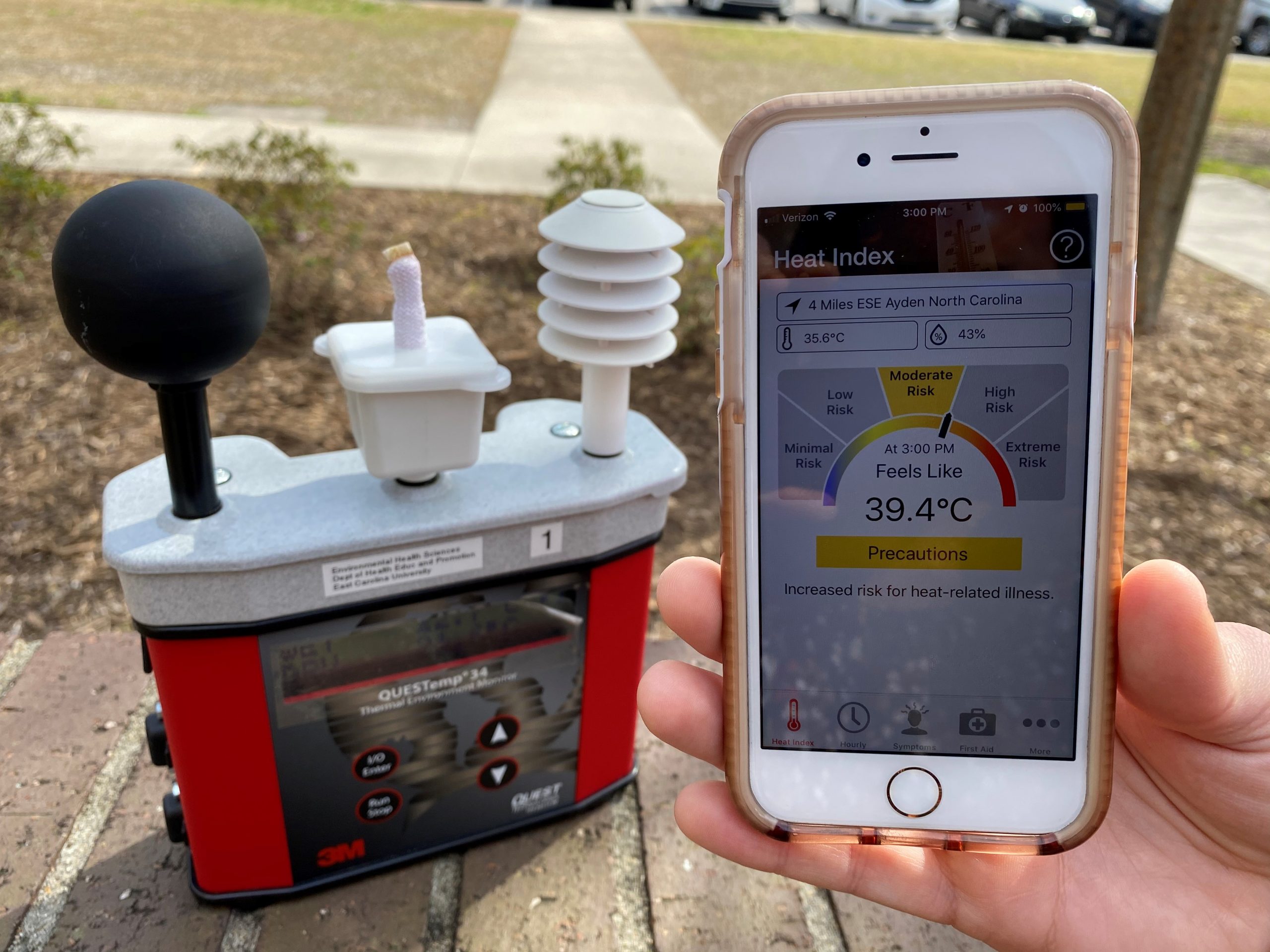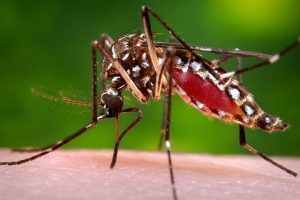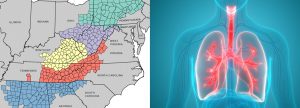Dillane D* and Balanay JG (2020). Comparison between OSHA-NIOSH Heat Safety Tool app and WBGT monitor to assess heat stress risk in agriculture. Journal of Occupational and Environmental Hygiene 17(4): 181-192. doi:10.1080/15459624.2020.1721512
Abstract
Agricultural workers are exposed to heat stress due to spending significant amount of time outdoors. Risk information from mobile apps is more readily available for timely advice on risk management that is crucial in preventing severe acute illnesses and deaths, but its reliability is unknown. The purpose of this study was to determine the reliability of the OSHA-NIOSH Heat Safety Tool mobile app in providing accurate risk information to prevent heat-related illnesses among agricultural workers in eastern North Carolina. Wet bulb globe temperature (WBGT) indices were datalogged at 2 agricultural sites using heat stress monitors from April–August 2019 and were assigned to risk levels (minimal, low, moderate, high, extreme) by workload (light, moderate, heavy, very heavy) based on the ACGIH Threshold Limit Values (TLVs). Hourly heat index (HI) and its corresponding risk level were obtained using the app. Hourly HI-based risk level assignments were time-matched to their corresponding WBGT-based risk level assignments (682 pairs) and analyzed using cross-tabulation by determining the percentage of hourly WBGT-based risk level assignments (‘gold standard’) with the same hourly HI-based risk level assignments under different workloads, with a higher percentage indicating higher app reliability. Results showed that the app correctly identified 60-100% of minimal risk conditions, depending on workload type, but its reliability decreased as the heat stress risk condition and workload became more severe. The app identified the majority of low risk conditions for a moderate workload (74%) and moderate risk conditions for a light workload (94%) only, indicating limited use in these specific conditions, while the app identified 0% of either the high risk or extreme risk conditions at any workload type. It is concluded that the performance of the OSHA-NIOSH app in assessing occupational risk to heat stress is not protective of workers particularly for heavy and very heavy workloads, and that the use of the app for the assessment of occupational heat stress risk in agricultural setting is not recommended.
*Danielle Dillane is a doctoral student in the ECU Doctor of Public Health (DrPH) Program, Environmental and Occupational Health (EOH) concentration.



